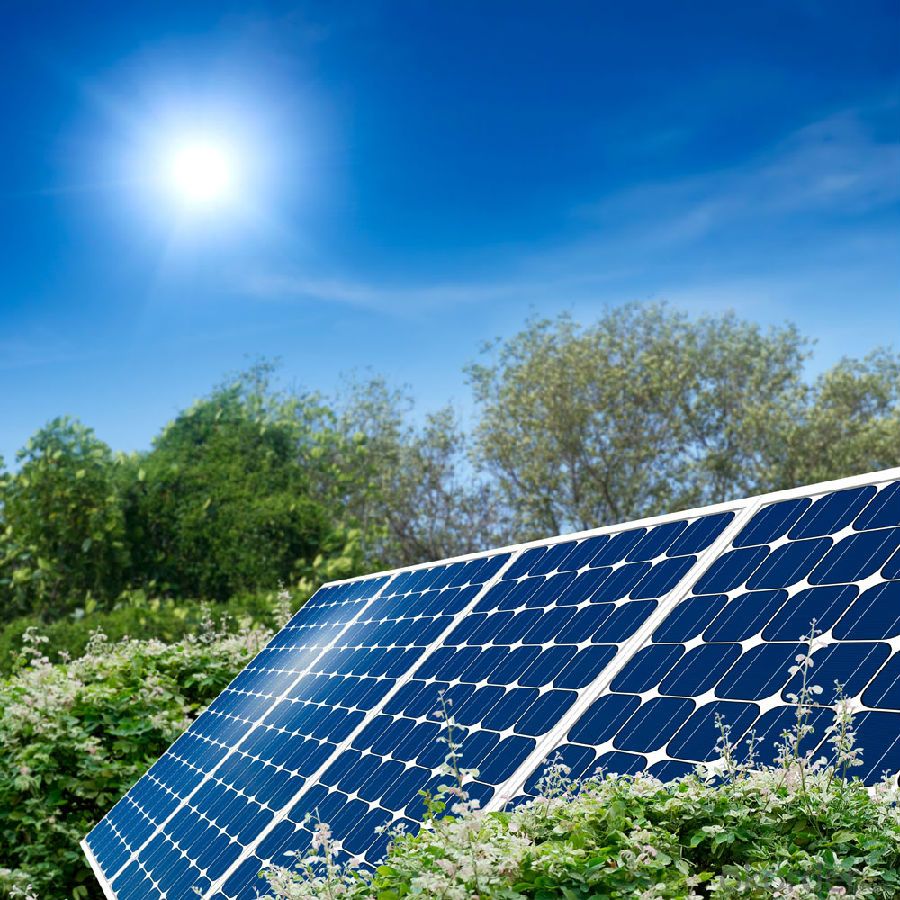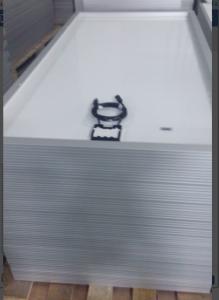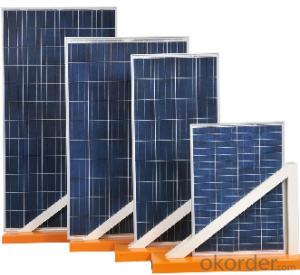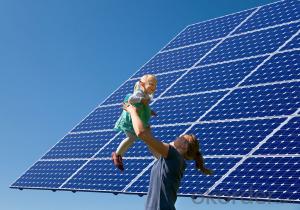260W Alternating Current Silicon Polycrystalline Solar Panel
- Loading Port:
- Nanjing
- Payment Terms:
- TT OR LC
- Min Order Qty:
- 200000 watt
- Supply Capability:
- 20000000 watt/month
OKorder Service Pledge
OKorder Financial Service
You Might Also Like
Solar cell module production process
Line called packaging line components, packaging is the production of solar cells a key step in the packaging process without a good, multi-well battery is also not a good component of production boards. Battery package not only the battery life is guaranteed, but also to enhance the combat strength of the battery. Product quality and high service life is to win can be the key to customer satisfaction, so the quality of components of the package board is very important.
FAQ:
1. How long will my inquiry get response?
Your inquiry related to our products or prices will be replied within 24 hours.
2. Can I get professional service and suggestion?
Well-trained and experienced staffs to answer all your questions in fluent English.
3. Do you accept OEM or customized design?
OEM & ODM, any your customized lightings we can help you to design and put into product.
4. What if I need specific design?
Distributorship are offered for your unique design and some our current models.
About us
We are a high-tech group wich specializes in solar products design,research, manufacture, sales,solar projects design and installation.
Our national sales service covers seven parts, including northeast, north, east, middle, south, northwest and southwest, international sales covers five continents and over forty countries, including Germany, Italy, Spain, France, America and Brazil etc.
Our present annual capacity is 6 million for wafer, 60MWp for solar cells,200MWp for solar modules and one hundred thousand for solar applications. It is expected that the annual capacity of 2012 will be up to 30 million for wafer, 300MWp for solar cells, 1000MW for solar modules and 2 million for solar applications.
We now provide Polycrystalline Silicon Solar Module;Thin Film Solar Module;Monocrystalline Silicon Solar Module Feature of our product
High conversion efficiency mono/poly-crystalline amorphous silicon solar cells
Modules incorporate high performance bypass diodes to minimize the power drop caused by shading
High transmittance, low-iron tempered glass
High performance EVA resin to prevent destroying and water.
AI frame: without screw, corner connection. 8 holes on the frame can be installed easily
Good performance of preventing from atrocious weather such as wind and hails
Certifications: CE IEC TUV VDE, Class I
10 years 90% output warranty
25 years 80% output warranty
Depends on various demands from different customers, CNBM could supply any kinds of service to meet you, please feel free to contact us at any time.

Data sheet
| Maximum Power | 260W |
| Cell Type(mm) | Polycrystalline Solar Cell 156*156 |
| Number of Cell(pcs) | 60(6*10) |
| Manufacture Site | China |
| Open-circuit Voltage(voc) | 37.6V |
| Maximum power voltage(vmp) | 30.5V |
| Short-circuit current(isc) | 8.95A |
| Optimum operating current(imp) | 8.53A |
| Power tolerance | 0~+5W |
| Module efficiency | 16% |
| Dimensions(mm) | 1640*992*40 |
| Weight | 19KG |
| Backsheet | Silver |
| Frame Color | White |
| Frame | Anodized Aluminum Alloy |
- Q: Can solar panels be installed on a sports stadium or arena?
- Yes, solar panels can be installed on a sports stadium or arena. Many stadiums and arenas around the world have already installed solar panels to generate clean and renewable energy. These panels can be mounted on the rooftop, parking structures, or even integrated into the facade of the building. The large surface area of stadiums and arenas makes them ideal for harnessing solar energy and reducing their carbon footprint.
- Q: What is the impact of roof orientation on solar panels' performance?
- The impact of roof orientation on solar panels' performance is significant. The orientation of the roof determines the amount of sunlight the panels receive throughout the day. Ideally, solar panels should be installed on a south-facing roof to maximize their exposure to sunlight. East and west-facing roofs can also work, but they may produce slightly less energy. North-facing roofs are generally not suitable for solar panel installation as they receive the least amount of sunlight. Overall, roof orientation plays a crucial role in determining the efficiency and effectiveness of solar panels.
- Q: Can solar panels be installed on schools or educational campuses?
- Yes, solar panels can be installed on schools or educational campuses. In fact, many educational institutions are increasingly adopting solar energy as a sustainable and cost-effective solution to meet their power needs. Installing solar panels on schools not only reduces electricity costs but also serves as an educational tool, allowing students to learn about renewable energy and environmental sustainability firsthand.
- Q: The average solar panel produces 0% of the energy that is put into it. What is happening to the other 90%? Is it being reflected or is it being obsorbed by materials that are not a part of the solar cell? Is it possible to one day have near 00% efficient solar cell technology?
- Sunlight comes in many frequencies, that's why it's white. Solar Photovoltaics require a photon to displace an electron from a semiconductor and that only happens at one frequency depending on what the semiconductor material is, therefore only one exact frequency gets turned into power. They are working on using organic dyes or quantum dots to absorb the energy in different frequencies and re-emit the energy in the desired frequency. They also are working on using multiple semiconductor materials to try and capture more frequencies. The rest of the energy becomes heat which also reduces the efficiency of the solar cells. The lab record for solar photovoltaics is 42.8% efficiency and quantum dots promises to be 65% to 75% efficient. Keep in mind that fossil fuels are based on energy collected by photosynthesis over millions of years. The efficiency of photosynthesis with modern plants is about 0.5% and the theoretical maximum efficiency of photosynthesis is 6.6%. All of our current energy use is based upon a small fraction of 0.5% efficiency over millions of years.
- Q: I was wondering if they create other forms of energy besides electrical that is unwanted. Like heat due to the friction of something, or sound. Also why is a solar panel not able to collect 00% of the energy that is striking its panels. And how could the efficiency of this be hypothetically improved.
- figure it out for us
- Q: i would like to hook up a power outlet to a solar panelmy light system is 500watts will run for 8 hours/day between noon to 8PM.So what is the most effective system do I need?
- You will need at least 500 W of solar panels (probably more to cope with cloudy days), and a DC to AC inverter. Since you're going to 8pm you *may* want a battery bank system too for those shorter winter days.
- Q: How do solar panels affect the property's branding and marketing?
- Solar panels can positively impact a property's branding and marketing by showcasing its commitment to sustainability and environmental responsibility. It can position the property as a forward-thinking and eco-friendly option, appealing to environmentally conscious consumers and potentially attracting a larger customer base. Additionally, solar panels can contribute to cost savings and energy efficiency, which can be highlighted as unique selling points, enhancing the property's marketability and competitiveness.
- Q: What is the average size of a solar panel?
- The average size of a solar panel is typically around 65 inches by 39 inches, or about 5.4 feet by 3.25 feet. However, the size can vary depending on the manufacturer and the specific model of the solar panel.
- Q: What is the cost of installing solar panels?
- The cost of installing solar panels can vary depending on various factors such as the size of the installation, location, type of panels, and additional equipment needed. On average, a residential solar panel system can cost anywhere between $10,000 to $30,000 or more. However, it's important to note that there may be potential tax incentives, rebates, and financing options available, which can help offset the upfront costs and make solar panel installations more affordable.
- Q: Can solar panels be used in areas with high levels of shade or obstruction?
- Solar panels can still be used in areas with high levels of shade or obstruction, but their efficiency and performance may be significantly reduced. Shade or obstructions like tall buildings, trees, or nearby structures can block sunlight, preventing the panels from receiving the necessary amount of light to generate optimal electricity. However, there are advanced technologies and design techniques available that can mitigate the impact of shading, such as using micro-inverters, optimizers, or tilting and positioning the panels to maximize sunlight exposure. Overall, while solar panels can still function in shaded areas, it is crucial to assess the level of shading and its potential impact on energy production before installation.
Send your message to us
260W Alternating Current Silicon Polycrystalline Solar Panel
- Loading Port:
- Nanjing
- Payment Terms:
- TT OR LC
- Min Order Qty:
- 200000 watt
- Supply Capability:
- 20000000 watt/month
OKorder Service Pledge
OKorder Financial Service
Similar products
Hot products
Hot Searches




























